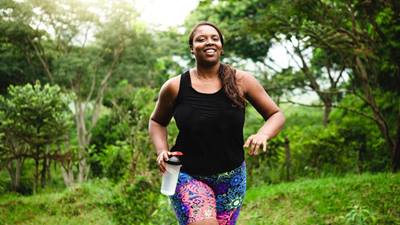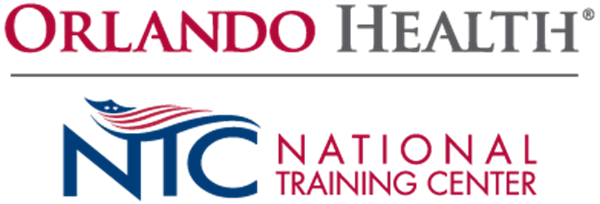Walking vs. Running: Which Is Better for Me?
Which is better, walking or running? It’s a common question, and the answer is: yes. In other words, both can be beneficial to you, and depending on your health and your goals, walking or running—or a combination of the two—can be an excellent addition to your workout regimen.
Walking: The Basics and Benefits 
Walking is an easy and effective way to be active and burn calories. It’s very safe and doesn’t require any additional equipment to be able to perform well and comfortably, although exercise clothes and good walking/running shoes are highly recommended. Walking is a lower-impact activity, so even if you have a current or past injury or a current physical limitation, you can usually still manage to walk well.
Walking involves ankle, knee, hip, and shoulder flexion and extension. It also involves a lot of core muscles, which are those in the lower/mid back and lower/mid abdomen. These muscles keep us upright and help maintain posture.
Walkers have fewer injuries than runners because walking is lower impact. As you start to add more mileage to walking, your muscles start to tighten up. Also, as you increase your walking, your muscles may not be strong enough to support the amount of activity. Most common injuries for walking are plantar fasciitis, knee pain, or lower back tightness or pain. If you have any muscle weakness or imbalance, that muscle group may be prone to injury.
Running: The Basics and Benefits
Running is very good for making your heart, core muscles and leg muscles (quadriceps, hamstrings, glutes and calves) stronger and improving your muscular endurance. To run at a given pace, your heart must increase the amount of blood that it pumps to the muscles being used, so running is considered a cardiovascular exercise. Running increases heart rate, so the higher your heart rate, the more calories you’re burning.
Your muscles will have to work harder to maintain good posture, form and running biomechanics as the intensity increases. As you improve your running, you’ll become more efficient, which means your heart rate may not go as high anymore. To continue to increase your heart rate, you’ll need to increase your running pace, do faster intervals, run on hills or do a combination of them.
The most common injuries among runners are plantar fasciitis, shin splints/stress fractures in the tibia or fibula, Achilles tendonitis, anterior knee pain—either inferior or superior to the patella (commonly called patellar tendonitis) — and IT Band syndrome. Also, as you begin to run more, hamstrings, glutes, quadriceps and hip flexors may start to become tight. This may show up in the form of pain, particularly in your lower back. Often, this is the result of posterior leg muscles and glutes becoming tight from improper warming up or cooling down, and lack of stretching.
Running is considered a high-impact physical activity. During every strike of the foot or landing, the forces can be up to four times your body weight. This force is absorbed through the ankles, knee, hips and spine. This constant impact can be more than the joints, bones, muscles, ligaments and tendons can handle. That’s why it’s important to keep distances lower during the initial stages of running. As your body becomes more conditioned, you can start to increase distance and intensity. Walk/run programs enable you to build your mileage by alternating walking and running for a certain time or distance during the workout.
Preventing Walking and Running Injuries
The best way to prevent an injury is to warm up and cool down properly. Dynamic stretching, rather than static stretching, is the best way to warm up cold muscles without injury. Dynamic stretching is based on movement and includes light jogging, knee lifts or walking lunges.
- Take the joints and muscles that you are going to use during running and move them through a great range of motion for at least 15 repetitions each and/or 5-10 minutes.
- Always start off slowly and progress into more speed.
- Do not rush your warmup.
Ensure that you are well-hydrated and fueled up. Water, electrolytes and nutrient-dense carbohydrates are what mostly fuel and cause muscle contraction. If you run low on water or fuel, you could cramp and possibly tear or strain a muscle.
After exercising, cool down for at least 10 minutes. Static stretching is good at this point, because your muscles are already warm. Stretch and hold each muscle group for 10-60 seconds. If you do have severe tightness in a muscle group, hold the stretches longer. I also recommend foam rolling before and after running.
Another great way to prevent injuries is to strength train every muscle group, but specifically the ones used during the activity — hamstrings, glutes, calves, quadriceps and core muscles — twice a week, performing two sets of 12-20 repetitions for core and lower body muscles.
Weight Loss: Walking vs. Running
You can lose weight with either walking or running, but the important variable is what you eat. Regardless of the physical activity, it is calories in versus calories out. More specifically, it is considering factors such as how many calories you’re burning through physical activity, how many calories you burn at rest and what types of calories you’re eating and when.
Running for 10 minutes will burn more calories than walking for the same amount of time. But running a mile and walking a mile can yield the same amount of calorie burn. Running, however, will take less time. But with either method, body fat is used as fuel, and you will lose weight.
Both walking and running are great ways to be more active, burn calories and feel great. Aim to get at least 150 minutes of moderate cardio exercise each week for your health. Remember to listen to your body. If you are sore or feel an injury coming on, take a break from walking or running. More is not always better. Stay hydrated and fueled up, and make sure to warm up, cool down and get enough sleep at night!
Learn More About the Services Offered at The Orlando Health National Training Center
The Orlando Health National Training Center on the campus of Orlando Health South Lake Hospital is a state-of-the-art sports and fitness facility located in Clermont, Florida. The Fitness Center offers community fitness, sports and health memberships and programs for youth and adults.
Learn More










